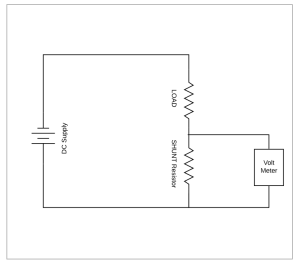Today, practically every control and monitoring circuit uses shunt-based current measurements as an alternative to sensors. To make these measurements accurately, it is useful to understand how shunts work. Because the method is categorized as a precision measuring technology, it should not be regarded as trivial.
A shunt is a low-value resistor used to measure current – it is therefore also referred to as a current-sense resistor. The shunt typically connects in series so it carries the current of interest. A voltage measurement device then connects in parallel with the shunt. The current through the shunt generates a voltage drop that is measured. The current value is derived from Ohm’s law and the known resistance (I=V/R). To keep power loss – and thus heat development – to a minimum, shunts must have resistive values no higher than the milliohm range. Some are even below that.
V=IR
I=V/R
Shunt Resistor:
- needs to be small such that it does not disrupt existing circuit.
- large enough to get a measurable voltage
Be careful about power rating.
P=I2R
p=102 x 10Ω
= 1000w
Example Shunt for 12V :
| Max Amp | 50A |
| R | 10 Ω |
| I = V(measured)/R | 8v/10 = 0.8A |
| P=I2R | =502 x 10Ω =250 kw |
References
| Reference | URL |
|---|---|
| Measuring current with shunt resistors | https://www.powerelectronictips.com/measuring-current-shunt-resistors/ |
